Less is more: balancing noise reduction and data retention in fMRI with data-driven scrubbing
- PMID: 36842522
- PMCID: PMC10773988
- DOI: 10.1016/j.neuroimage.2023.119972
Less is more: balancing noise reduction and data retention in fMRI with data-driven scrubbing
Abstract
Functional MRI (fMRI) data may be contaminated by artifacts arising from a myriad of sources, including subject head motion, respiration, heartbeat, scanner drift, and thermal noise. These artifacts cause deviations from common distributional assumptions, introduce spatial and temporal outliers, and reduce the signal-to-noise ratio of the data-all of which can have negative consequences for the accuracy and power of downstream statistical analysis. Scrubbing is a technique for excluding fMRI volumes thought to be contaminated by artifacts and generally comes in two flavors. Motion scrubbing based on subject head motion-derived measures is popular but suffers from a number of drawbacks, among them the need to choose a threshold, a lack of generalizability to multiband acquisitions, and high rates of censoring of individual volumes and entire subjects. Alternatively, data-driven scrubbing methods like DVARS are based on observed noise in the processed fMRI timeseries and may avoid some of these issues. Here we propose "projection scrubbing", a novel data-driven scrubbing method based on a statistical outlier detection framework and strategic dimension reduction, including independent component analysis (ICA), to isolate artifactual variation. We undertake a comprehensive comparison of motion scrubbing with data-driven projection scrubbing and DVARS. We argue that an appropriate metric for the success of scrubbing is maximal data retention subject to reasonable performance on typical benchmarks such as the validity, reliability, and identifiability of functional connectivity. We find that stringent motion scrubbing yields worsened validity, worsened reliability, and produced small improvements to fingerprinting. Meanwhile, data-driven scrubbing methods tend to yield greater improvements to fingerprinting while not generally worsening validity or reliability. Importantly, however, data-driven scrubbing excludes a fraction of the number of volumes or entire sessions compared to motion scrubbing. The ability of data-driven fMRI scrubbing to improve data retention without negatively impacting the quality of downstream analysis has major implications for sample sizes in population neuroscience research.
Copyright © 2023. Published by Elsevier Inc.
Figures
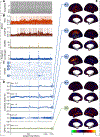
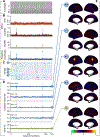

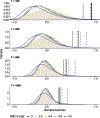








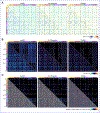












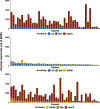
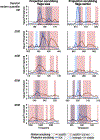

References
-
- Afyouni S, Nichols TE, 2018. Insight and inference for DVARS. Neuroimage 172, 291–312. doi:10.1016/j.neuroimage.2017.12.098. http://www.sciencedirect.com/science/article/pii/S1053811917311229. - DOI - PMC - PubMed
-
- Agrawal U, Brown EN, Lewis LD, 2020. Model-based physiological noise removal in fast fMRI. Neuroimage 205, 116231. doi:10.1016/j.neuroimage.2019.116231. http://www.sciencedirect.com/science/article/pii/S1053811919308225 - DOI - PMC - PubMed
-
- Behzadi Y, Restom K, Liau J, Liu TT, 2007. A component based noise correction method (compcor) for BOLD and perfusion based fmri. Neuroimage 37 (1), 90–101. doi:10.1016/j.neuroimage.2007.04.042. http://www.sciencedirect.com/science/article/pii/S1053811907003837. - DOI - PMC - PubMed
-
- Bianciardi M, Fukunaga M, van Gelderen P, Horovitz SG, de Zwart JA, Shmueli K, Duyn JH, 2009. Sources of functional magnetic resonance imaging signal fluctuations in the human brain at rest: a 7t study. Magn. Reson. Imag. 27 (8), 1019–1029. doi:10.1016/j.mri.2009.02.004. http://www.sciencedirect.com/science/article/pii/S0730725X09000599. - DOI - PMC - PubMed
Publication types
MeSH terms
Grants and funding
LinkOut - more resources
Full Text Sources
Medical
Miscellaneous

